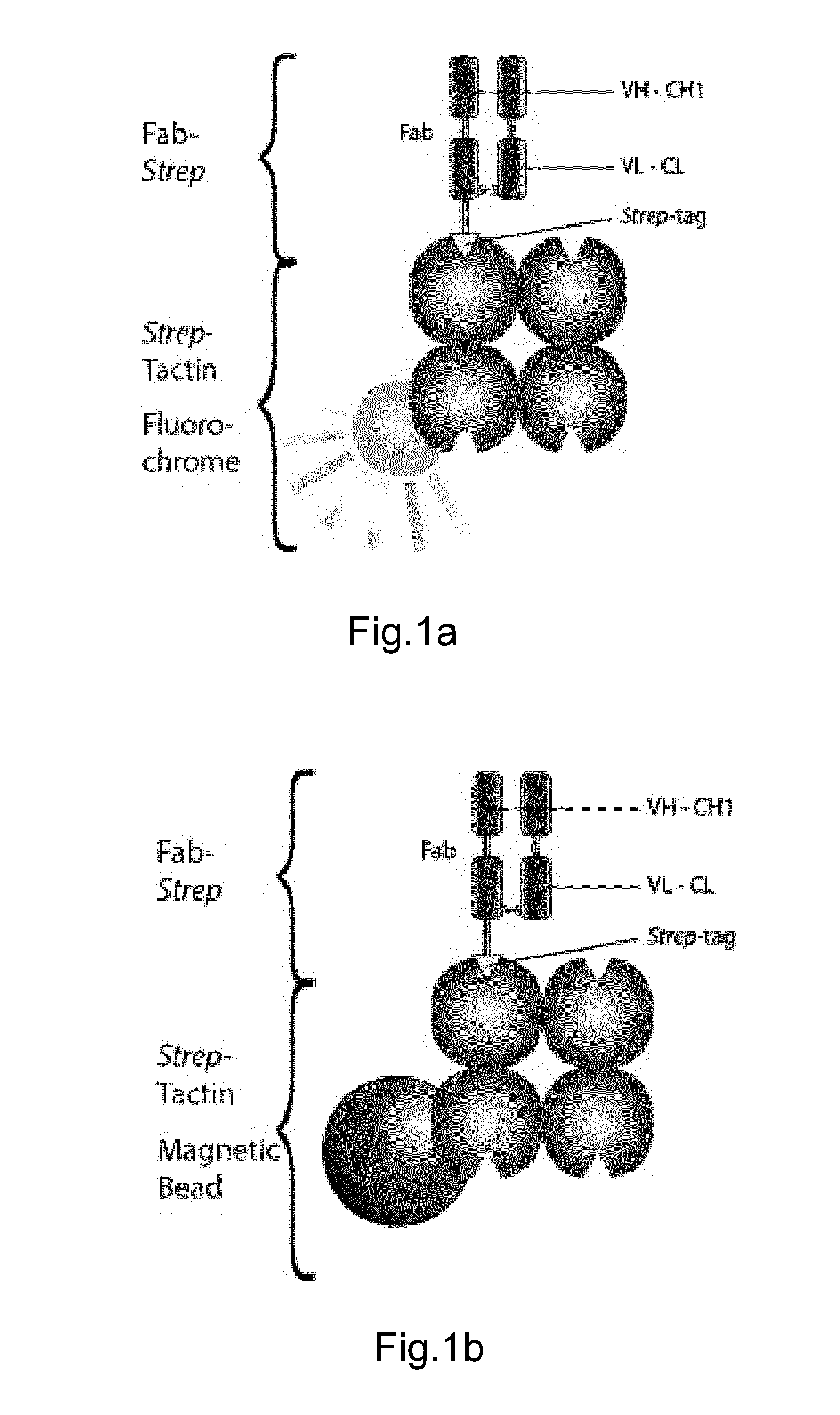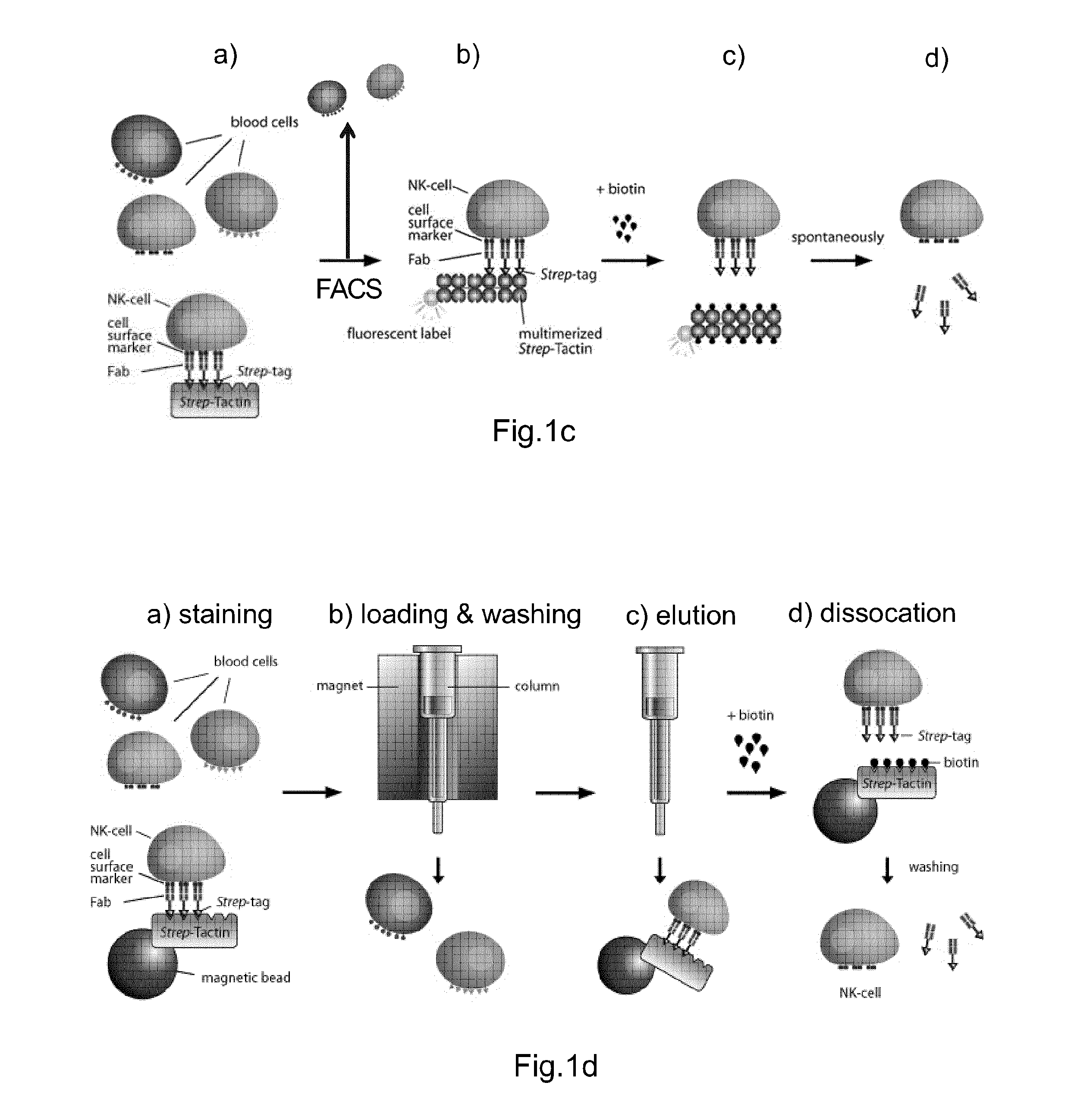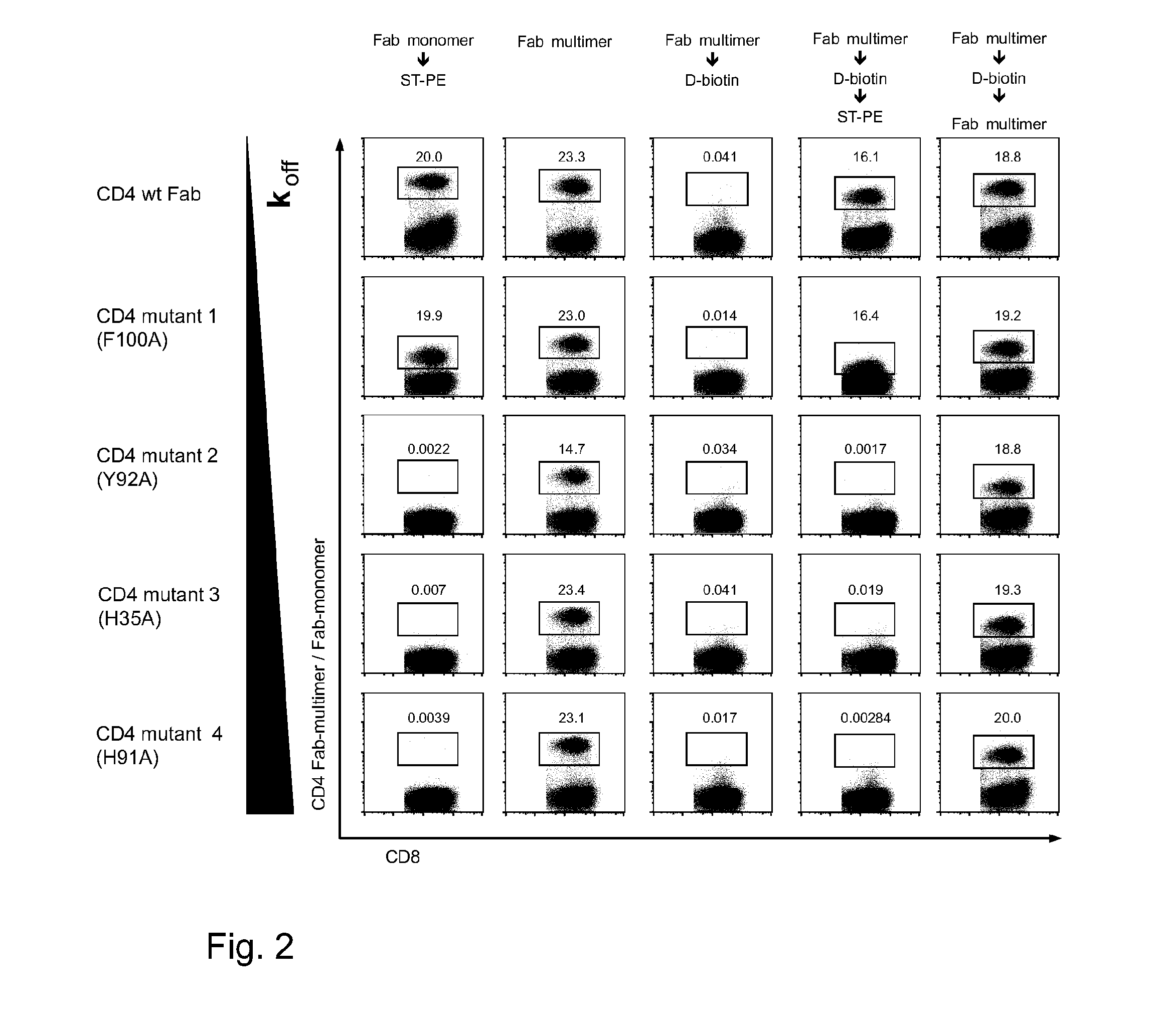Method of reversibly staining a target cell
a target cell and reversible staining technology, applied in the field of reversible staining a target cell, can solve the problems of difficult combinations of purifications via several different markers, time-consuming and expensive, and laborious procedures used to generate cell preparations for immunotherapy
- Summary
- Abstract
- Description
- Claims
- Application Information
AI Technical Summary
Benefits of technology
Problems solved by technology
Method used
Image
Examples
examples
Materials and Methods
Blood Samples
[0061]Fresh PBMCs were generated from either peripheral blood or buffy-coats by centrifugation over Biocoll separating solution. Peripheral blood was obtained from healthy adult donors at the Institute of Medical Microbiology, Immunology and Hygiene (Technical University Munich), and buffy-coats were obtained from autologous blood donors at the Institute for Anesthesiology, German Heart Centre Munich (State of Bavaria and Technical University Munich). Written informed consent was obtained from the donors, and usage of the blood samples was approved according to national law by the local Institutional Review Board (Ethikkommission der Medizinischen Fakultait der Technischen Universitit Miinchen).
Production of Fab-Fragments as Receptor Binding Reagents (Clonin2, Expression, Purification)
[0062]The variable domains originating from the monoclonal anti CD4 antibody 13B8.2 were generated by gene synthesis using the sequences described in U.S. Pat. No. 7,4...
PUM
| Property | Measurement | Unit |
|---|---|---|
| dissociation constant | aaaaa | aaaaa |
| dissociation constant | aaaaa | aaaaa |
| dissociation rate constant | aaaaa | aaaaa |
Abstract
Description
Claims
Application Information
 Login to View More
Login to View More - R&D
- Intellectual Property
- Life Sciences
- Materials
- Tech Scout
- Unparalleled Data Quality
- Higher Quality Content
- 60% Fewer Hallucinations
Browse by: Latest US Patents, China's latest patents, Technical Efficacy Thesaurus, Application Domain, Technology Topic, Popular Technical Reports.
© 2025 PatSnap. All rights reserved.Legal|Privacy policy|Modern Slavery Act Transparency Statement|Sitemap|About US| Contact US: help@patsnap.com



